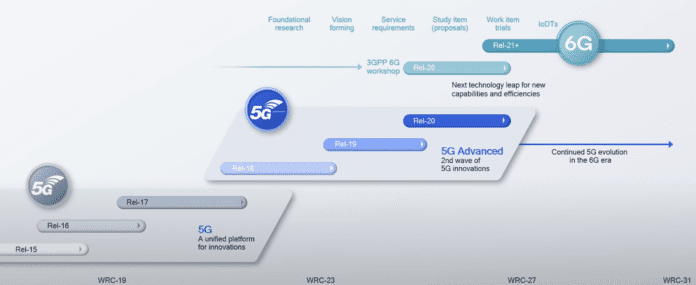
By RCR Wireless News March 25, 2024
Collected at : https://www.rcrwireless.com/20240325/5g/qualcomm-svp-talks-wireless-rd-philosophy-priorities
As it develops foundational 6G technologies, Qualcomm is focused on delivering “maximum impact” for future use cases, sustainability and network TCO
Qualcomm has been instrumental in developing foundational wireless technologies, as well as using its work to help with relevant global standardization activities, since the company was founded in 1985. During an interview at Mobile World Congress in Barcelona, Senior Vice President of Engineering and Global Head of Wireless Research John Smee laid out his R&D methodology— “The balance really is about trying to do the right things at the right scale.”
Smee continued: “We have to make a variety of bets, if you will. There’s the longer moonshots when we’re trying to make the impossible possible…It’s also about really working with our business teams to understand what’s the highest value from a prioritization standpoint that can move the needle for something like IoT or XR or automotive connectivity.” He described simultaneous focuses on those moonshots and “interesting intermediate-term topics and, within those, identifying the bigger, complex ideas that can take us forward.”
As it relates to 6G, and the ongoing evolution of 5G to 5G-Advanced, Smee called out Qualcomm’s work on Giga-MIMO, RedCap and supporting artificial intelligence across a continuum of device, edge and cloud.
As for the big vision of 6G, Smee looked at a 2030 deployment timeframe and highlighted the need for the technology to “make sense and add value to a network and to types of devices from 2030 all the way to 2040.” In terms of applications, he called out extended reality (XR) and RF sensing to help understand the physical environment. “It’s about looking at the future use cases, the energy- and cost-effectiveness of operating the network, and then also the reality that there’s more and more connected devices. For us, our 6G design right now is about making sure we’re hitting each of those key target areas to have that maximum impact.”
With Giga-MIMO, the idea is to enable a leap from massive MIMO, used commonly for mid-band (3.5 GHz) 5G deployments, to antenna systems with thousands of elements to support deployment of 6G in upper mid-band frequencies from 7 GHz to 16 GHz. In this paradigm, the upper mid-band would serve as the coverage layer for 6G while facilitating reuse of 5G massive MIMO sites to deliver comparable coverage.
5G NR-Light Reduced Capability (RedCap) was standardized in 3GPP Release 17. It was designed to support 5G communications for devices that don’t need the full capabilities of 5G, things like wearables, industrial IoT sensors, hot spots and consumer premise equipment for fixed wireless access (FWA). Last year Qualcomm announced the Snapdragon X35 Modem-RF System for RedCap.

Leave a Reply